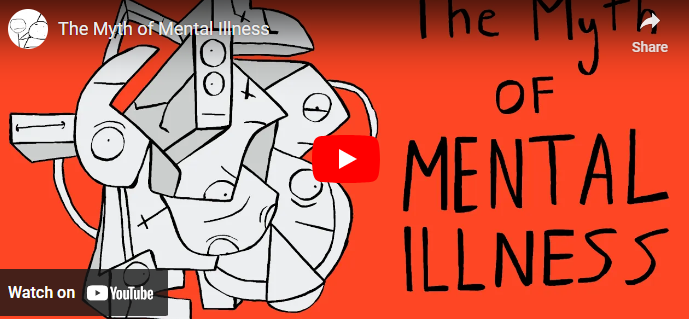
Contents
Understanding Different Forms of Bullying in Various Settings
Bullying is a pervasive issue that can occur in various settings, including schools, workplaces, online platforms, and communities. It is essential to understand the different forms of bullying to effectively address and prevent this harmful behavior.
One common form of bullying is physical bullying, which involves acts of physical aggression such as hitting, kicking, or pushing. This type of bullying can cause both physical and emotional harm to the victim. Verbal bullying, on the other hand, includes name-calling, teasing, or making hurtful remarks towards the victim. Verbal bullying can be equally damaging as physical bullying and can have long-lasting effects on the victim’s self-esteem.
Another form of bullying is social bullying, also known as relational bullying, which involves manipulating social relationships to harm the victim’s reputation or social standing. This type of bullying often includes spreading rumors, excluding individuals from social groups, or cyberbullying through social media platforms. Cyberbullying, in particular, has become increasingly prevalent with the rise of digital communication tools and social media platforms. It is essential to monitor online interactions and address any instances of cyberbullying promptly.
Understanding the dynamics of bullying in different settings is crucial to effectively prevent and address this behavior. By recognizing the signs of bullying and taking proactive measures to promote a culture of respect and empathy, individuals can create safe environments where bullying is not tolerated.
To learn more about the various forms of bullying and how to address them effectively, visit websites such as stopbullying.gov and preventbullying.com. These resources offer valuable information and strategies for recognizing and preventing bullying in different settings. By educating ourselves and taking a stand against bullying, we can work towards creating a safer and more inclusive community for all.
Recognizing Signs of Bullying Behavior in Children and Adolescents
Bullying behavior can manifest in various forms, including physical, verbal, social, and cyberbullying. It is essential to be able to recognize the signs of bullying to address the issue effectively. Children and adolescents who are being bullied may exhibit certain warning signs that indicate they are experiencing distress. Some common signs include sudden changes in behavior, reluctance to go to school, unexplained injuries, lost or damaged belongings, difficulty sleeping, or a decline in academic performance.
Additionally, victims of bullying may show signs of anxiety, depression, or low self-esteem. They may become withdrawn, exhibit signs of fear or avoidance, and have trouble making friends. It is crucial for parents, teachers, and caregivers to be vigilant and proactive in identifying these red flags to provide support and intervention promptly.
In some cases, children and adolescents who bully others may also display certain behaviors that signal their involvement in bullying activities. These behaviors can include aggression towards peers or family members, a tendency to dominate or control others, a lack of empathy, and a disregard for rules or authority figures. It is essential to address these behaviors early on to prevent further harm to both the bully and the victim.
To prevent bullying effectively, it is crucial to create a culture of openness and communication where children and adolescents feel safe reporting incidents of bullying. Schools and communities can implement programs that educate students about the different forms of bullying and the impact it can have on individuals. By promoting empathy, kindness, and respect, we can cultivate environments where bullying is not tolerated.
By recognizing the signs of bullying behavior in children and adolescents and taking proactive measures to prevent and address it, we can create safer and more inclusive communities where everyone can thrive. If you suspect that a child is being bullied or engaging in bullying behavior, it is essential to seek help from school counselors, mental health professionals, or relevant support services. Together, we can work towards eradicating bullying and creating a supportive and nurturing environment for our youth.
For more resources and information on recognizing and preventing bullying behavior, you can visit websites such as StopBullying.gov and PACER’s National Bullying Prevention Center. These websites offer valuable insights, tips, and resources for addressing bullying in various settings.
Effective Strategies for Preventing Bullying in Schools and Communities
Bullying is a prevalent issue that can have serious consequences for those involved. To combat this problem, it is crucial to implement effective strategies for preventing bullying in schools and communities. By creating a safe and inclusive environment, we can work towards eradicating bullying behavior.
One of the key strategies for preventing bullying is education. By raising awareness about the different forms of bullying and its impact, we can help individuals recognize bullying behavior and understand the importance of standing up against it. Schools and communities can organize workshops, seminars, and training sessions to educate students, teachers, parents, and community members about bullying prevention.
Another effective strategy is to promote a culture of empathy and respect. By fostering positive relationships and encouraging kindness and understanding, we can create a supportive environment where bullying is less likely to occur. Teaching empathy and conflict resolution skills can help individuals develop healthy ways of relating to others and prevent conflicts from escalating into bullying situations.
Implementing clear policies and procedures for addressing bullying is also essential in preventing this behavior. Schools and communities should have protocols in place for reporting and responding to bullying incidents promptly and effectively. By establishing consequences for bullying behavior and providing support to both victims and perpetrators, we can send a clear message that bullying will not be tolerated.
Furthermore, collaboration between schools, parents, law enforcement, and community organizations is crucial in preventing bullying. By working together, we can create a united front against bullying and implement comprehensive strategies that address the root causes of this behavior. Engaging all stakeholders in the prevention efforts can help create a strong support network for those affected by bullying.
Preventing bullying requires a multifaceted approach that addresses education, empathy, clear policies, and collaboration among various stakeholders. By implementing these strategies in schools and communities, we can create a safer and more inclusive environment where bullying has no place. Together, we can work towards building a society free from bullying and promoting respect and kindness for all.
For more information on bullying prevention strategies, visit StopBullying.gov and Pacer’s National Bullying Prevention Center.
Supporting Victims of Bullying and Providing Proper Intervention
Bullying is a serious issue that can have long-lasting effects on its victims. It is crucial to provide support to those who have been bullied and to intervene effectively to stop the cycle of aggression. Victims of bullying may experience emotional distress, low self-esteem, and even physical harm. Therefore, it is essential to offer them the right support and intervention to help them cope and recover.
One of the first steps in supporting victims of bullying is to listen to their experiences without judgment. Victims need to feel heard and understood, so it is important to create a safe space for them to share their feelings. Validating their emotions can help them feel supported and encourage them to open up about what they are going through. Additionally, offering reassurance and comfort can help victims feel less alone in their struggles.
Providing proper intervention is also crucial in addressing bullying situations. It is essential to take reports of bullying seriously and to investigate them promptly. School administrators, parents, and other authorities should work together to address the issue and ensure that appropriate consequences are given to the perpetrators. By taking swift and decisive action, the cycle of bullying can be interrupted, and the safety of the victims can be protected.
In addition to addressing individual cases of bullying, it is important to implement prevention programs that promote a culture of respect and empathy. Teaching children and adolescents about the importance of kindness, acceptance, and inclusion can help prevent bullying behaviors from occurring in the first place. By fostering a positive and supportive environment, schools and communities can create a sense of belonging for all individuals, reducing the likelihood of bullying incidents.
Moreover, offering counseling and mental health support to victims of bullying can help them process their experiences and develop coping mechanisms. Professional therapists and counselors can work with victims to address the emotional impact of bullying and help them build resilience. By providing access to mental health services, victims can receive the support they need to heal and move forward from their traumatic experiences.
Supporting victims of bullying and providing proper intervention are essential steps in creating a safe and inclusive environment for all individuals. By listening to victims, intervening effectively, promoting empathy and respect, and offering mental health support, we can work together to prevent bullying and support those who have been impacted by it.
For more information on supporting victims of bullying and intervention strategies, visit StopBullying.gov.
Promoting Empathy and Respect to Create a Bully-Free Environment
Bullying is a prevalent issue that can have serious consequences for those involved. Promoting empathy and respect is a crucial step in creating a bully-free environment in schools and communities. By fostering a culture of empathy and respect, we can help prevent bullying behavior and create a safe and inclusive space for everyone.
One effective way to promote empathy and respect is through education and awareness programs. Teaching children and adults about the impact of bullying and the importance of treating others with kindness and respect can help foster a culture of empathy. Schools can implement anti-bullying curriculums and workshops to educate students about the different forms of bullying and how to prevent it.
Another important aspect of promoting empathy and respect is leading by example. Parents, teachers, and community leaders play a crucial role in demonstrating respectful behavior and showing empathy towards others. By modeling positive behavior and communication, we can inspire others to do the same and create a more compassionate environment.
Building strong relationships and promoting open communication is also key to preventing bullying. Encouraging dialogue between students, parents, and teachers can help address issues before they escalate into bullying behavior. Creating a supportive network where individuals feel comfortable sharing their experiences can help prevent bullying and provide a safe space for those who may be experiencing it.
Furthermore, promoting empathy and respect involves creating a zero-tolerance policy towards bullying. Schools and communities should have clear guidelines and consequences in place for those who engage in bullying behavior. By enforcing strict policies against bullying, we send a clear message that this type of behavior will not be tolerated.
Promoting empathy and respect is essential in creating a bully-free environment. By educating individuals, leading by example, fostering open communication, and enforcing zero-tolerance policies, we can work together to prevent bullying and create a safe and inclusive space for everyone.
Useful Resources:
- StopBullying.gov – Provides resources and information on how to prevent and respond to bullying.
- PACER’s National Bullying Prevention Center – Offers bullying prevention resources and tools for parents, students, and educators.
- Cyberbullying Research Center – Research and information on cyberbullying and strategies for prevention.
Conclusion
In today’s society, understanding the various forms of bullying that exist in different settings is crucial for creating a safer and more compassionate environment for everyone. Whether it’s physical, verbal, social, or cyberbullying, being able to recognize the signs of such behaviors in children and adolescents is the first step towards prevention and intervention. By being vigilant and observant, parents, educators, and community members can identify early warning signs and take appropriate action to address the issue.
Effective strategies for preventing bullying in schools and communities involve a multi-faceted approach that includes education, awareness, and proactive intervention. Implementing anti-bullying programs, fostering a culture of kindness and respect, and promoting positive relationships among peers are just a few examples of how we can work together to create a bully-free environment. By teaching empathy, tolerance, and conflict resolution skills, we empower individuals to stand up to bullying behavior and support those who may be experiencing it.
Supporting victims of bullying and providing them with the proper intervention is essential for their well-being and recovery. Offering emotional support, counseling services, and safe spaces for victims to express their feelings can help them heal from the trauma of being bullied. Additionally, working closely with parents, teachers, and mental health professionals can ensure that victims receive the necessary assistance and protection they need to overcome the impact of bullying on their lives.
Promoting empathy and respect within our schools and communities is a key component of creating a positive and inclusive environment where bullying has no place. By fostering a culture of acceptance, understanding, and appreciation for diversity, we cultivate a sense of belonging and mutual respect among individuals. Encouraging open communication, active listening, and conflict resolution skills can help prevent misunderstandings and conflicts that may escalate into bullying behaviors.
Recognizing and preventing bullying requires a collective effort from everyone in our society. By understanding the different forms of bullying, recognizing the signs of bullying behavior, implementing effective prevention strategies, supporting victims, and promoting empathy and respect, we can create a more compassionate and inclusive world where bullying is no longer tolerated. Together, we can build a community where kindness triumphs over cruelty, and where everyone feels safe, valued, and respected. Let us stand united against bullying and work towards a future where empathy and understanding are the cornerstones of our interactions with one another.



